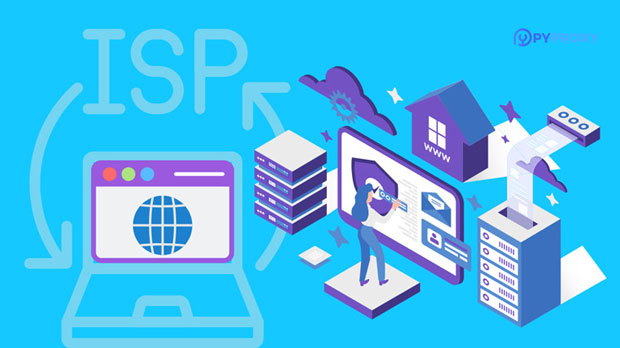When considering proxy services, users often face a choice between free trial socks5 proxies and paid options. While both types offer the same basic functionality—allowing users to mask their IP address and enhance online privacy—there are significant differences in terms of performance, reliability, security, and features. Free trials are typically limited in terms of service quality, availability, and customer support. On the other hand, paid services tend to offer better speed, privacy protection, and enhanced user experience, albeit at a cost. This article explores these differences in depth, providing a comprehensive comparison between free trial SOCKS5 proxies and paid services. 1. Performance and Speed: Free Trial vs. Paid SOCKS5 ProxiesOne of the most noticeable differences between free trial SOCKS5 proxies and paid services is the level of performance and speed. Free trials, by nature, are often limited in terms of the bandwidth available to users. These proxies may be shared among a large number of users, resulting in slower connection speeds, frequent interruptions, and higher latency. Additionally, free trial services might impose strict bandwidth caps, preventing users from performing high-data-demand tasks like streaming or gaming.In contrast, paid SOCKS5 proxies generally offer faster and more stable connections. Providers often allocate more bandwidth to premium users, ensuring smoother and more reliable access. Paid proxies tend to have better infrastructure, including dedicated servers, which can accommodate more users without compromising on speed. As a result, users who require consistent performance—such as for professional work, streaming, or secure browsing—are likely to find paid services to be a more reliable option.2. Security and Privacy: Protection of User DataSecurity and privacy are essential factors when choosing a proxy service, and there is a notable difference between free trial and paid SOCKS5 proxies in this regard. Free proxies, including those offered in trial form, often do not provide robust encryption and may even log user activity. This can pose a significant privacy risk, as malicious actors or unauthorized third parties might intercept sensitive data.Paid SOCKS5 proxies typically provide stronger encryption protocols, which help ensure that your online activities remain private and secure. Additionally, reputable paid proxy services often have no-log policies, meaning that they do not store any user activity data. This is particularly crucial for users concerned with maintaining anonymity online. While free trial services might offer limited privacy protection, they generally fall short in providing the level of security that paid proxies deliver.3. Reliability and Uptime: Free vs. Paid ServicesReliability is a key consideration when selecting a proxy, especially for users who need consistent service without downtime. Free trial SOCKS5 proxies are often hosted on overloaded servers, leading to frequent outages or slow connections during peak usage hours. These interruptions can be frustrating, especially for users who rely on proxies for business or privacy-related purposes.Paid socks5 proxy services, on the other hand, are typically more reliable. Providers invest in infrastructure that ensures a higher uptime, often with service level agreements (SLAs) that guarantee a certain percentage of availability. These services are designed to handle higher traffic loads without compromising on performance, making them a more dependable option for users who need consistent access without downtime.4. Customer Support: Assistance and Problem ResolutionCustomer support is another area where paid SOCKS5 proxy services tend to shine compared to free trial options. Free trial services often provide limited or no customer support, leaving users to troubleshoot issues on their own. In many cases, free proxy providers do not have dedicated support teams, so users may struggle to resolve technical problems or get answers to their questions.Paid proxy services, in contrast, usually offer robust customer support, including 24/7 assistance through live chat, email, or phone. This is particularly important for users who rely on proxies for business or security reasons, as quick issue resolution can help avoid disruptions in service. Dedicated customer support teams can also help users with setup, troubleshooting, and any specific configuration needs, ensuring a smoother experience.5. Features and Configuration Options: Advanced FunctionalitiesWhen comparing free trial SOCKS5 proxies with paid versions, users will often find a broader range of features and configuration options with paid services. Free trials may offer limited server locations, fewer customization options, and basic functionalities. For example, users might only have access to a small number of proxy servers, limiting their ability to switch locations for geo-blocked content or bypassing censorship.Paid services typically provide a wider selection of servers, including multiple locations worldwide, giving users greater flexibility and control over their online experience. Moreover, paid services may include advanced features such as rotating IP addresses, multiple authentication methods, and support for additional protocols, all of which enhance the proxy's versatility. These features are often essential for power users who need specific configurations for privacy, security, or access to restricted content.6. Cost Considerations: Free vs. Paid ServicesThe most obvious difference between free trial SOCKS5 proxies and paid services is the cost. Free trials, as the name suggests, do not require payment, making them attractive to users who are only interested in testing out the proxy service without committing financially. However, the limitations of free trials in terms of performance, security, and reliability often make them less suitable for long-term use.Paid services, on the other hand, involve a subscription fee. While this might seem like a disadvantage at first, the added value in terms of faster speeds, better security, and reliable support can justify the cost. Moreover, many paid proxy providers offer tiered pricing plans, which allow users to choose a package that fits their budget and usage needs. The investment in a paid service can be worthwhile for users who require consistent performance and high-level privacy.7. Use Cases and Suitability: Which One is Right for You?Ultimately, the decision between using a free trial SOCKS5 proxy and a paid service comes down to your specific needs and priorities. Free trials can be a good option for casual users who only need temporary access to a proxy for non-critical tasks, such as bypassing basic geo-restrictions or testing the service's functionality.On the other hand, if you require a proxy for more demanding tasks—such as secure browsing, bypassing advanced geo-blocks, or maintaining anonymity in professional settings—a paid SOCKS5 proxy service is likely the better choice. The enhanced security, reliability, and customer support provided by paid services make them ideal for users who value privacy, speed, and uptime.Conclusion: Weighing the Pros and ConsIn conclusion, the choice between a free trial SOCKS5 proxy and a paid service depends on your specific needs, usage patterns, and expectations. Free trials offer a risk-free way to test a service but often come with limitations in terms of performance, security, and reliability. Paid services, while requiring an investment, offer greater stability, better performance, and enhanced privacy protection. For users who value a seamless and secure proxy experience, paid SOCKS5 proxies are generally the superior option.
Jan 06, 2025
![arrow]()



















































